BEST CYCLING HELMET FOR ROAD AND GRAVEL

When it comes to choosing the best cycling helmet, I’ll admit to a bias. As an enthusiast, speed is a big part of why I love to ride. I want all my gear to help me go fast, including my road bike helmet.
So when I first started looking for the best road bike helmet, I focused on choosing an aero road helmet rather than a cycling helmet that claimed to be ultra-light or highly vented or super-comfortable.
However, some of the newest standard cycling helmets we’ve tested really stand out for their fit and comfort. They are better ventilated than the best aero road helmets, which already cool your head as well as the average standard road bike helmet, and rank in the top echelon of all cycling helmets for safety.
There are also days when I’m not going at speeds to get any added benefit from my aero road helmet. I may be doing a group ride that’s got a lot of climbing, or I’m riding on slower gravel surfaces, or I’m doing a recovery or soul ride at a slower pace.
On those days, and on any day for some of you, it may look a little pretentious wearing an aero road helmet.
My fellow testers Nate, Miles, Adam, and I have picked a small number of cycling helmets we found really excel when comfort, cooling, and a look that suits your speed and style are paramount to having a great time on two wheels.
In this post, you can read the reviews of each helmet, see what we’ve found matters most in choosing the best cycling helmet for paved and gravel roads, and learn why some helmets aren’t included in this post that you might have thought would be.
As you might expect or have already experienced with other cycling gear, the best gear is often the most expensive. All of these helmets are priced at US$300, £230-290, and €300-350. That may be more than you plan or want to spend on a helmet. But, in absolute $, £, or € and compared to what else you spend your cycling budget on, it isn’t much more to wear one of the best, considering you’ll wear that helmet several days a week for a couple of years or more.
And unlike many of my reviews, I’d be very happy and recommend wearing any of these cycling helmets on road, gravel, mtb, or commuting rides. They are the best of the best, and choosing between them is more about your personal preference than any small performance or feature differences.
Related Reviews
CYCLING HELMET REVIEWS
Giro Aries Spherical – Unique Advantages

The Giro Aries Spherical combines both a physical and mental edge to create a unique advantage among the best road bike helmets.
It’s a comfortable, well-ventilated, well-made cycling helmet with conventional and innovative elements. Together they give me the sense that I’m riding a cooler, lighter and safer helmet, even if there’s little if any, meaningful performance difference between the Giro Aries and its top-of-the-line road bike helmet competitors.
VERSATILE FIT
While straightforward, the Giro Aries uses a full complement of proven adjustment mechanisms that fit my head shape easily and well and that I could envision would do likewise for those with a rounder or more oval head than mine.
There is about 40mm of width adjustment in its plastic, sturdy circumference strap at the back of your head. That allows me to better align the strap’s shape to the contour of my own noggin even before I start to dial it in.
Many helmet brands have done away with this width adjustment. Instead, some use a thinner, more pliable circumference strap that easily adapts to your head shape (Trek). Others use a strap of similar material and strength as the one in the Giro Aries inside a shell that is more aligned with so-called “intermediate oval” head shapes (Specialized) at the middle of the bell curve or favoring western (oval, intermediate-oval) or Asian (round) shaped heads.
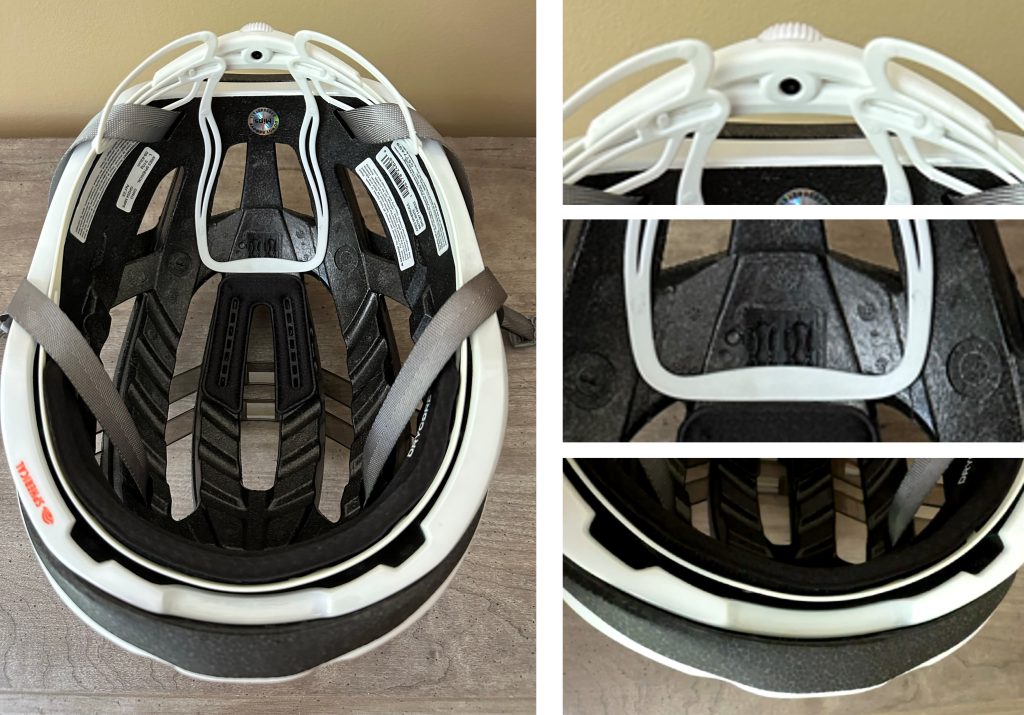
The Aries width and height adjustments and clearance between the front strap and shell combine for an optimum fit for your head and sunglasses and a comfortable sense that the shell is lighter than it actually is.
The Aries uses a small-diameter Giro branded dial to tighten or loosen the circumference strap. The dial, width adjustment, and a simple, sturdy, snap-in height adjustment with three options about 5mm apart are all cleanly integrated into the rear cradle.
I found the height adjustment key to bringing the front brow of the helmet up to allow for my largest sunglasses.
The Giro Aries Spherical straps also seem to draw on old-school design. They are anchored well inside the shell, come together under your ears with an up/down, forward/back clip, are made of a pliable material that lays comfortably against your face and neck that has a Goldilocks “just-right” length. It connects with a basic clip under your chin.
File this under “it just works.” It actually works quite well.
A UNIQUE TYPE OF COMFORT
A 1-inch, 30-millimeter tall, quite comfortable, and sweat-absorbing pad with open slots about halfway up sits against your forehead. It’s attached to the circumference strap, which itself sits about 3/8″ or 5mm away from the shell.
With that pad design and the various fit adjustments that I described earlier, and the circumference strap all dialed in, I don’t feel the presence of this cycling helmet’s shell the way I do with others. I feel the forehead pad and the one sitting at the top center of my head, but I don’t feel the shell.
It was a strange feeling at first, almost as if my helmet wasn’t connected to the pads or if I hadn’t adjusted it tight enough. (I had.) But I got used to it after a couple of rides, and I was left with the sensation that the helmet was much lighter than it was.
In fact, the Large size, US CPSC versions of the Giro Aries (316 grams actual) and its leading competitors, the Trek Velocis (306 grams actual) and Specialized S-Works Prevail 3 (320 grams claimed), essentially weigh the same. It’s just that the Aries feels lighter. So that’s one of the mental advantages I mentioned at the top that favors this cycling helmet.
Physically, the Giro Aries’ shell has large, front-to-back vent cutouts across the top of the helmet. Those line up with good-sized rear vents that exhaust the air. These vents are so large that if my hair were thinning, I’d definitely be working sunscreen into my scalp on sunny days.
On the warmest and most humid days, both on hot paved roads and off-road at slower gravel riding speeds, the Giro Aries Spherical vented my head quite well. And the forehead pad absorbed any sweat. In regular summer and spring weather, I was cool enough in the Aries that I just never thought about venting or where the sweat was going.
SAFETY WITH A TWIST
While all of the top road bike helmets get good ratings these days in the Virginia Tech Helmet Ratings, the Giro Aries Spherical ranked #1 among 115 road, MTB, urban, and multi-discipline helmet models that received their best, five-star rating.
That’s another mental advantage for the Aries.
But Aries doesn’t use the plastic sliding layer inside the helmet shell that you see in many MIPS helmets. Instead, it has a shell within a shell design where one moves across the other like a ball and socket. This gives you a slip plane – the top shell moves independently of the bottom upon impact – but in a different way than five-star helmets that don’t score quite as well.
This “Spherical” design is “powered by MIPS,” and the MIPS logo is displayed on the helmet. I assume this means it is one of a growing range of MIPS or MIPS-approved designs.
Having taken a fall wearing the Giro Aries Spherical helmet on a gravel ride, I can personally attest that this design worked to keep my head from concussing. If only Giro or MIPS could work some kind of ball and socket design into a jersey that could have avoided the sore ribs I’m still recovering from as I write this review…
The same Spherical design is also used in Giro’s aero road Eclipse helmet and standard Aether model. While also getting five-star ratings, the Eclipse ranks #45 on the list while the Aether comes in at #83. Go figure.
Unlike the Aries, the shell within a shell design in the Eclipse (review upcoming) feels more like an extra shell layer. While still providing enough airflow, the upper one partially covers the vents of the lower one, likely to provide better aerodynamics.
FUNCTION AND FORM
Beyond the fit, comfort, and safety functionality I’ve gone through above, I will tell you that the Giro Aries plays very nicely with all sorts of sunglass friends, from modestly sized to goggle-sized ones. Properly adjusting the helmet height makes room for tall sunglasses and brings the brow down to reduce the gap between the tops of smaller ones.
You can also easily and securely dock sunglasses of various sizes both right-side up and upside down.
The Aries also looks and feels very well made. While not flashy, I really like the attention they’ve given to the straps and how they’ve integrated the ball and socket shell design into the helmet with clear plastic cross struts that you wouldn’t notice without looking closely.
On the form side of things, the Giro Aries Spherical has a traditional helmet shape that looks clean. Along with basic black and white options, the helmet comes in black and red, black and green, sky blue, and turquoise, all with matte finishes.
You can order it for US$300, £220, €280 using these links to BTD (BikeTiresDirect) 10% off w/code ITK10, Competitive Cyclist, Performance Bicycle, and Sigma Sports, all stores I’ve vetted and recommended for their competitive prices, high independently verified customer satisfaction ratings and good, enthusiast-level product selection.
In The Know Cycling is ad-free, subscription-free, and reader-supported. If you want to help keep it rolling without any added cost to you, buy your gear and kit after clicking the store links on the site. When you do, we may earn an affiliate commission that will help me cover the expenses to create and publish our independent, comprehensive and comparative reviews. Thank you, Steve. Learn more.
Specialized S-Works Prevail 3 – One of the Best

The Specialized S-Works Prevail 3 improves on its already quite-good predecessor and joins the leaders in the competitive field of maximally ventilated cycling helmets.
That’s the conclusion my fellow testers and demanding gearheads Nate and Miles emphasized after riding Specialized’s latest Prevail model.
OPEN TO THE AIR
With the S-Works Prevail 3, Specialized widened the three central airflow channels that run from the front to the rear of the helmet. It also replaced the six, roughly 1-inch or 30mm deep cross struts between those channels in the Prevail II with 1/8 inch, 3mm structural slats.
The Prevail’s signature-look rear exhaust area continues on this newest model. If anything, the truncated helmet’s back end starts higher on the Prevail 3, perhaps to enable the air to exit the helmet sooner than with the Prevail II.
And yes, Specialized did switch their numbering system from Roman numerals to alphanumeric ones. Sadly, the Roman’s contract with the NFL for the Super Bowl remains in place.
Design, look, and numerical designation aside, the net effect is more air ventilation. In our experience, the S-Works Prevail 3 excels on hot days doing fast rides, whether on climbs or in crits. While we have also felt good airflow with the Giro Aries Spherical and Trek Velocis, two of Prevail’s closest competitors, the Prevail 3 appears to have more of its shell open to the air than either of those helmets.
IMPROVED FIT ADJUSTMENTS
Spech has also improved the fit adjustments in the Prevail 3 in several ways.
While you still can’t raise or lower the clip below your ear where the down straps come together, you can now adjust it fore and aft with a bit of effort.
This design appears to compromise between the infinitely adjustable and often self-adjusting clip used on many helmets and those that join the straps in place either by sewing them together or with a fixed clip.
Nate prefers a clip that allows height and fore-aft adjustment; I like the simplicity and streamlined feel of sewn straps; Miles likes the Prevail 3 clip’s solution, and Nate and I are ok with it.
The down straps themselves now exit the helmet from the shell’s inner edge rather than the center, as with the Prevail II. While the straps don’t lay flat against your temples, the arms of your sunglasses can now comfortably sit over the straps, abiding by Velominati Rule #37. Shamefully, the straps on the Prevail II forced you to violate it.
Under your chin, Specialized uses a standard strap buckle. The straps coming into it lay flat against each other and have the appropriate length to adjust for your neck size and a band to keep any extra length in place. All of this makes for a clean look and feel.
The Prevail 3 MIPS also appears even better integrated into this cycling helmet, perhaps as invisible as any MIPS design I’ve seen. Its inner pads are embossed on the slip layer substrate used in the safety system rather than being attached with ties or adhesive.
A highlight of the Prevail helmet continues to be how well it fits your head. The small dial at the back of the helmet allows you to micro-adjust the length of the circumference strap. Tightening it feels uniform, front to back and side to side. And there is enough range to accommodate a thick winter hat or a high-and-tight summer haircut.
You can also easily and securely change the height of the helmet with one of the five detent positions. While I might be reading more into this than what Specialized had in mind, you can also adjust the two height sliders to make more room for one side of your head than the other, depending on whether you are more left or right-brained.
AS COMFORTABLE AS THEY COME
Superior ventilation, comprehensive fit adjustments, and sufficient padding across the brow, temples, and front half of the head make wearing S-Works Prevail 3 very comfortable and secure.
The helmet feels light and unobtrusive. It doesn’t shift around when you ride over bumps. Instead, it just stays out of the way.
Even sunglasses with large or tall frames don’t interfere with the Prevail 3’s high brow line. There’s also plenty of clearance for sunglass arms around your ears.
In one of the most noticeable and unique updates, the S-Works Prevail 3 adds sunglass docking slots at the helmet’s outer front edges just above your temples. These are not vents that you can stick sunglasses into. Instead, they are purpose-built for sunglass arms, and they fit every pair that Nate, Miles, and I tried, some upside-down, others right-side up.
MODERN STYLE
Among road bike helmets, the Specialized S-Works Prevail 3 stands out as much for its modern style as its cycling helmet performance. It’s an eye-catcher that those riding with both Nate and Miles asked about during their test rides.
The materials and assembly of the functional components and paint and finishes look first-rate. Beyond the standard white, black, and red, the helmet also comes in what I find to be the pleasing pastel colors sage, off-white, light green, and grey, with a bright green rear panel that we tested.
Except for a ride on a cold or wet day where you might want more protection from the elements or one where marginal gains would favor an aero-road helmet, the Prevail 3 is one of the best cycling helmets you can wear. It will serve you well and stand out on road, gravel, or MTB ride whether you are a racer or a more casual enthusiast.
Even at its US$300, £250, €320, there’s a lot of value built into the performance, functionality, and styling of this Specialized helmet.
You can order the S-Works Prevail 3 using these links to recommended stores Competitive Cyclist, Performance Bike and Sigma Sports.
Trek Velocis – Great Performance in a Traditional Style

There’s a lot to like about the Trek Velocis road bike helmet. It’s supremely comfortable, well-ventilated, expertly executed, and has traditional styling with just a few flaws that shouldn’t be deal breakers for most cycling enthusiasts.
SUPREMELY COMFORTABLE AND WELL-VENTILATED
From the first time my fellow tester Adam and I put the Velocis on, it was comfortable on our more oval than round-shaped heads. The helmet’s weight seems well distributed and feels like just another part of my head rather than an extra I’d added on top of it.
Adam especially likes how the Trek Velocis’ combination of thin but dense padding, secure BOA-dialed tensioning, and a sense of being open-to-the-air creates a superior level of comfort.
The Trek Velocis has two horizontal vents spanning your forehead, five large intake vents across the front and sides of your head, and three more at the top. Five exhaust vents sit at the back, and all of the helmet’s vents appear in good alignment to channel the airflow.
That’s a lot of venting in one helmet, and you feel the wind moving through them when you ride along at speed.
FIRST RATE EXECUTION
The Trek Velocis cycling helmet is also very well executed. The MIPS safety system integrates seamlessly within it; you wouldn’t notice it without the yellow logos. And among the over 100 road bike helmets receiving five-star ratings in the Virginia Tech impact tests, the Velocis ranks in the top 15.
It also looks and feels expertly constructed, with no rough or unfinished edges between its inside EPS foam liner and its outside shell. The helmet we tested has a handsome, consistent black matte finish running the length of the surface with grey-black patterned crossing ribs.
The rear cradle, with its BOA dial and thread-like circumference strap, folds into the helmet and out of the way when you’re not wearing the Velocis. This feature, similar to what you find in the aero road Trek Ballista that was introduced alongside the Velocis, is unique to these Trek helmets. It’s a space saver and protects the whole mechanism when you store the helmet between rides or pack it into a kit bag or luggage for a trip.
A FEW FLAWS BUT NO DEAL-BREAKERS
There are a few things I wish Trek had done better with the Velocis.
I like that the rear down straps come from separate, fixed positions rather than threading through the cradle and that the front ones come from inside the helmet rather than the shell’s edge.
At the same time, I would prefer they used a more pliable strap material. If you’re not careful, the strap edges can fold in at the locking clip below your ears. And between those clips and the clip below your chin, the straps don’t lay flat against each other.
The Velocis (and Ballista) straps run too long for my 15½ inch size climber’s neck and even for Adam’s 17½ inch size sprinter’s one. You can easily cut them and use electrical or black duct tape to finish the edges, but it seems like an oversight with this otherwise well-made helmet.
Sunglass docking is also hit-or-miss with the Velocis. The helmet has 2cm or 3/4 in wide rubber pieces at the inside edge of the outermost front vent to help hold your sunglasses in place. But even with those, only the most flexible sunglasses with average-size lenses inserted upside down held firmly and confidently enough against the helmet during a ride on rough roads.
The Trek Velocis also sits lower on your forehead. That’s something my fair skin appreciates, which also improves aero performance with average-size cycling sunglasses. That said, if you wear the very large frame shades, they will likely come in contact with the front lip of the helmet and press down on the bridge of your nose unless you adjust the helmet height to create more room.
While not heavy, at 309 grams for the Large model that Adam and I tested, the Trek Velocis weighs about the same as many of the better aero helmets. That’s also similar to many of the best-ventilated road bike helmets from other brands we’ve tested. This probably says more about the advances aero road helmets have made and the challenges of reducing weight while maintaining the features of the best road bike helmets.
Prices for the Velocis and other top-performing road and aero-road helmets come in at around US$300. While that’s not cheap, considering all the safety, fit, comfort, and performance benefits you get from a helmet like the Velocis, it’s money well spent.
TRADITIONAL STYLING
Considering how good the best road bike helmets have become, many of us will choose between helmets that both fit and perform well based on how we like the way they look.
To my eyes, the Trek Velocis has a traditional road bike helmet style and, except for aqua, comes in standard albeit wonderfully finished black, white, and red colors.
If that look suits your style, and you appreciate all the performance benefits packed into this helmet without being put off by the strap or sunglasses limitations I’ve pointed out, the Trek Veloics is one of the best cycling helmets you can buy.
You can order it for US$300, £230, €300 using these link to the Trek and Sigma Sports.
WHAT MATTERS MOST
Here’s a summary of my criteria for choosing the best cycling helmets for this review.
Safety – All bike helmets should have a safety compliance sticker showing they meet a national safety standard. For example, helmets sold in the US must meet the CPSC (Consumer Products Safety Commission) standard. Those sold in Canada must have the CSA (Canadian Standards Association) sticker. Those in Australia and New Zealand meet the AS/NZS standard. In Great Britain, it’s the BSI, in Europe, the CE, Japan, the JIS, etc.
If you want to compare how much safer one road bike helmet is than another, there’s a fair amount of debate (and marketing) around what kind of tests should be done and what type of technology a helmet needs. The best of both attempts to test and protect you from a range of potential impact angles and forces that might cause a concussion.
There’s plenty of detail on the different approaches and what’s behind them in this section of my review of aero road helmets. For this summary, I’ll merely say that all the helmets we tested met the US standard.
Note that helmets using designs and safety technologies other than MIPS and ones with none of these technologies also rank highly in tests done by labs that use protocols that favor MIPS technology.
Fit – If a helmet doesn’t fit you well, all the helmet safety stickers and protection systems and arguments about which are better at protecting you from a concussion or worse aren’t going to help you much. Consumer Reports published a good list of things to do to ensure your helmet fits safely. I encourage you to review it and decode the numbers in the graphic below.
Fitting safely and fitting comfortably aren’t the same things. You can have a cycling helmet that fits safely but isn’t comfortable; you can have one that fits comfortably but isn’t being worn safely.
Ideally, you pick a road bike helmet that you can fit both safely and comfortably. More on comfort in a minute.
In getting your helmet to fit right, I look at
- How adjustable is the helmet?
- How good are the adjustment devices?
Comfort – Of course, comfort is subjective. We often evaluate comfort on how light the helmet feels and how the pads, straps, and clips feel against our head, face, or chin. Another implicit measure of comfort comes in how soon you forget you’ve got your helmet on after your ride starts or how long a ride you can do without wanting to take it off.
The mismatch between fit and comfort I mentioned above can be due to wearing a road bike helmet that is best suited for a head shaped differently than yours. For example, if you’ve got a more oval head shape, a helmet designed for a rounder one will pressure you in the front or back and give you too much room on the sides. If your head tends to be rounder, even the best cycling helmet with a more oval shape can be tightened to fit you on the sides of your head yet never tight enough in the front and back to avoid moving up and down when you ride.
Just like with shoes made in lasts that can be too narrow or wide for your feet despite being your size, helmets are also made in shapes that are more oval or round, or somewhere in between. Fortunately, some also have adjustments or use internal fit mechanisms to allow for a wide range of shapes In my review of aero helmets, I discovered these distinctions not only by wearing a bunch of helmets from different brands but by measuring and plotting their length and width.
In this review, my fellow testers with conveniently different head shapes judge how comfortable a helmet is or might be when worn by a rider whose head and helmet shapes are best suited for each other.
Cooling – As with fit and comfort, cooling and venting are different things. Many helmet suppliers boast about the size and number of vents a helmet has. While more or larger vents should enable better cooling, they don’t determine how much better one helmet will cool your head versus another.
Where air enters your helmet, how it flows across your head, and where and how it exits is far more a contributor than the size and number of vents.
For example, I’ve found some helmets with a lot of front vents don’t cool the top of your head because there aren’t enough vents or the right placement of vents at the top of the helmet to pull the air up and out. Other helmets have smaller or fewer vents, but they keep your head cooler than those with more and bigger vents because of how the whole arrangement of vents sucks the air across your head and out the back of your helmet.
And we each have different cooling requirements. Some of us naturally sweat more than others, so we have different cooling requirements.
Noise – Airflow through and around a helmet can also create or dampen noise. The size or position of your ears, in combination with a helmet’s size and shape, can also affect the amount of airflow you hear. Your speed, body, and head position on the bike can contribute to noise level as well.
With all these variables, we discounted helmets that were particularly noisy.
Sunglasses fit – Depending on the type and model of sunglasses you wear and the shape and strapping on your helmet, your sunglasses and helmet can get along famously, or you can have a non-negotiable conflict between them.
While more usually the case with aero helmets that cover more of your forehead than the best road bike helmets, the top of your sunglasses can compete for space with the front of your helmet.
More often, it’s the arms of your sunglasses that come into contact with the circumference strap from your helmet, either along the side of your head or above your ears.
With multiple testers using different types of sunglasses, we’ve identified these conflicts.
We’ve also looked at how well sunglasses “dock” or fit into these helmets when you want to take them off for a section of a ride or a rest stop.
Looks – Oh yeah, we roadies are a self-conscious group. Does the helmet look standard? Is it unique in a good or bad way? Does it come in enough colors to match with our bikes or kit or high-viz options? Does it look well made?
Most of these helmets stand out in one way or another. I’ve pointed out where they do.
Price and Weight – I used US $300 as the upper market price limit and about 300 grams as the medium-size helmet weight target for those I selected to review.
The weight of the same helmet can differ depending on where it is sold as it may have to add or change something to qualify for the safety certification of one country or region where it doesn’t in another. And, the actual weight as with most cycling gear, isn’t always what the brand claims it will be.
Find what you're looking for at In The Know Cycling's Know's Shop
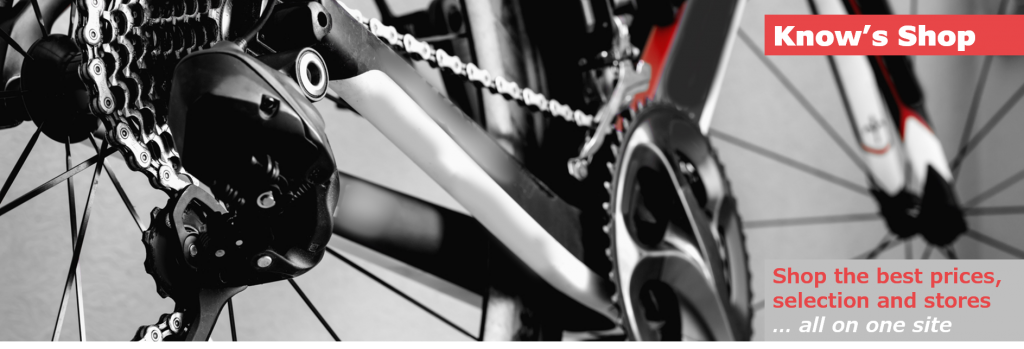
- Compare prices on in-stock cycling gear at 15 of my top-ranked stores
- Choose from over 75,000 bikes, wheels, components, clothing, electronics, and other kit
- Save money and time while supporting the site when you buy at a store after clicking on a link
WHY WE DIDN’T INCLUDE SOME CYCLING HELMETS
There are literally hundreds of road bike helmets and other cycling helmets sold. You might reasonably ask why we included so few in this review.
Only road bike helmets – As mentioned in the introduction, I’ve done a separate review of aero road helmets and am updating that soon. And as this review is focused on cycling helmets for road and gravel, I’ve not included other categories of helmets like those dedicate to MTB or Urban/Commuting, though you could ride the helmets reviewed above for that kind of riding.
There are also no “budget” or “value” helmets included here. While they may have safety approvals, those helmets are more appropriate for the needs of recreational riders out on short rides a couple of days a week for a couple of months a year. They fall short of the needs of enthusiasts who ride 4-6 days a week for hours at a time throughout the year.
Only those that currently have United States CPSC (Consumer Products Safety Commission) approval – Brands that don’t distribute their helmets in the US won’t submit them for CPSC or CSA (Canadian) safety approval. Since I and my fellow testers live in the US, we can’t get access to those helmets to test.
Some European or British helmet brands will introduce their models in their home region first and get the necessary CE (Europe) and BSI (Great Britain). They will then submit the helmets for testing with the CPSC, CSA, AS/NZE (Australia, New Zealand), and JIS (Japan) safety agencies.
There are a few helmets I’m interested in testing that are currently in that situation. If they become available and our testing shows they are among the best, I will include a review in this post.
Only the very best performers – To make it easier for you to choose, I don’t want to give you a review, as some do, of the “best bike helmets” with short summaries of 10 or 15 helmets that vary in performance. That’s a waste of your time and mine. Worse, some of those “reviews” are regurgitation or AI summaries of supplier provide product descriptions.
I’ve read a lot of them and reviewed the product lines of every major bike helmet brand distributed in the US. I’ve picked the top-of-the-line helmets to review and brought you the best of those.
Further, some helmets that may have been the best in prior years have been or are due to be replaced, according to what the brands have told me. That’s why you don’t see some brands or models in this review.
If there’s a helmet you’re interested in that you believe clears all of these bars – is a standard road bike helmet, approved by the US, and is one of the best performers still in the company’s line – let me know in the comments below. I’ll either tell you why it isn’t included in this review or review it and compare it to those that are.
* * * * *
Thank you for reading. Please let me know what you think of anything I’ve written, or ask any questions you might have in the comment section below.
If you’ve benefited from reading this review and want to keep new ones coming, buy your gear and kit after clicking the store links in this review and others across the site. When you do, we may earn an affiliate commission that will help me cover the expenses to create and publish more ad-free, subscription-free, and reader-supported reviews that are independent, comprehensive, and comparative.
If you prefer to buy at other stores, you can still support the site by contributing here or by buying anything through these links to eBay and Amazon.
You can use the popup form or the one at the bottom of the sidebar to get notified when new posts come out. To see what gear and kit we’re testing or have just reviewed, follow us by clicking on the links below.
Thanks, and enjoy your rides safely! Cheers, Steve

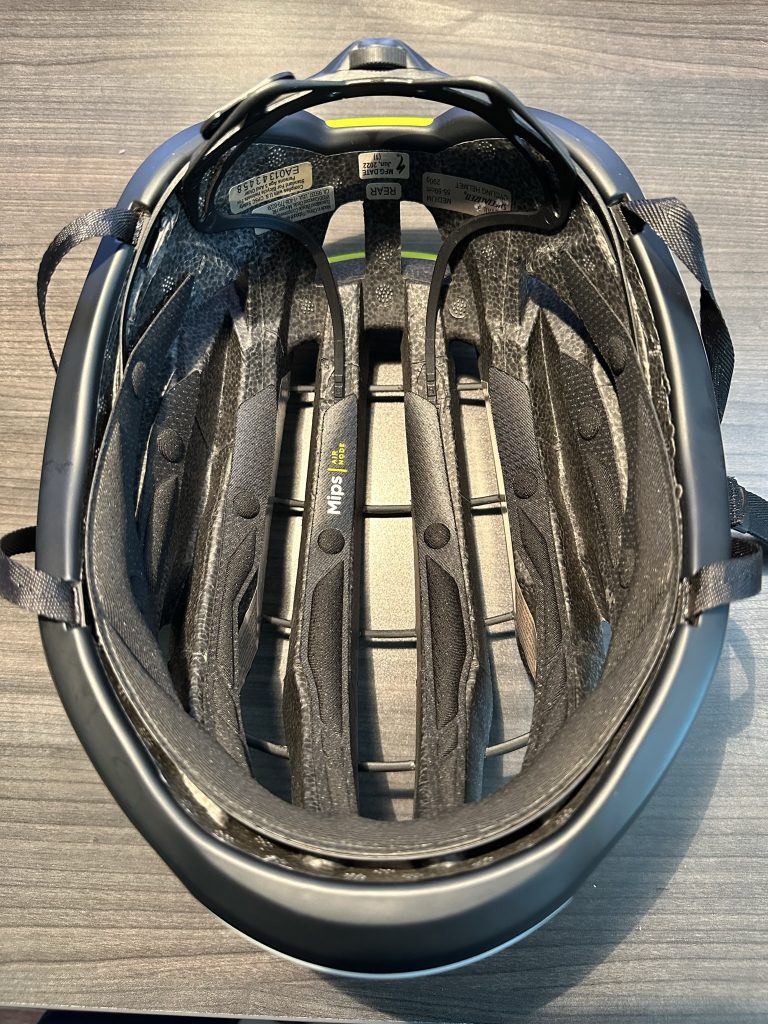

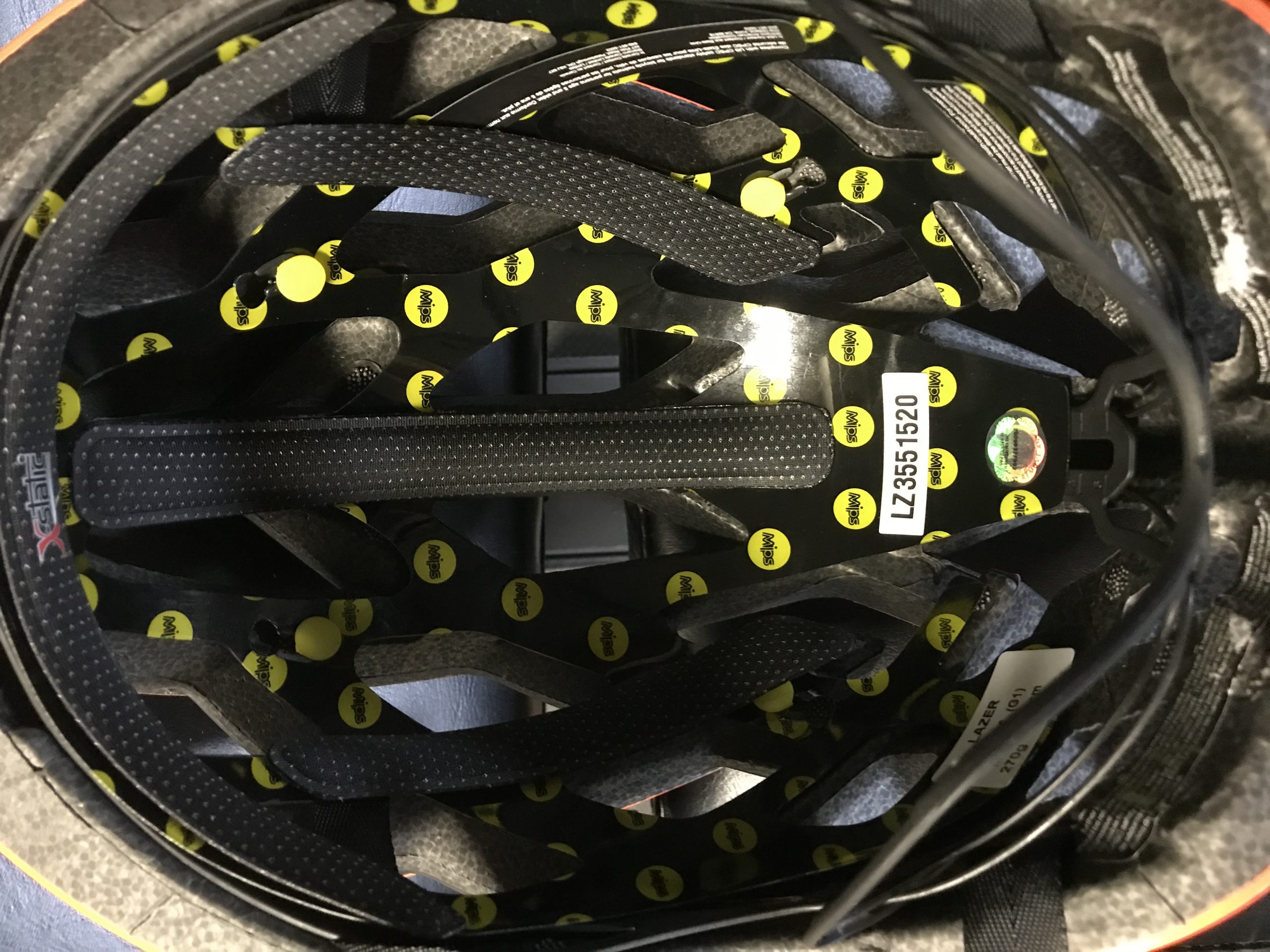
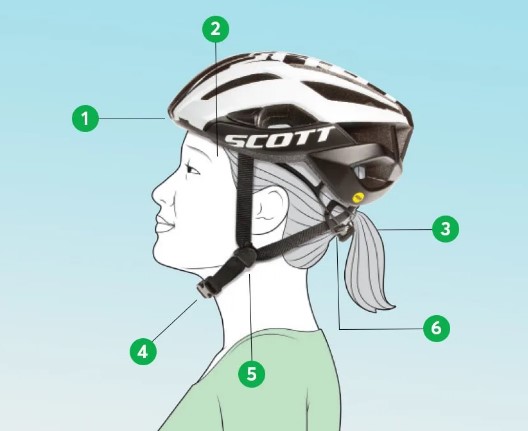
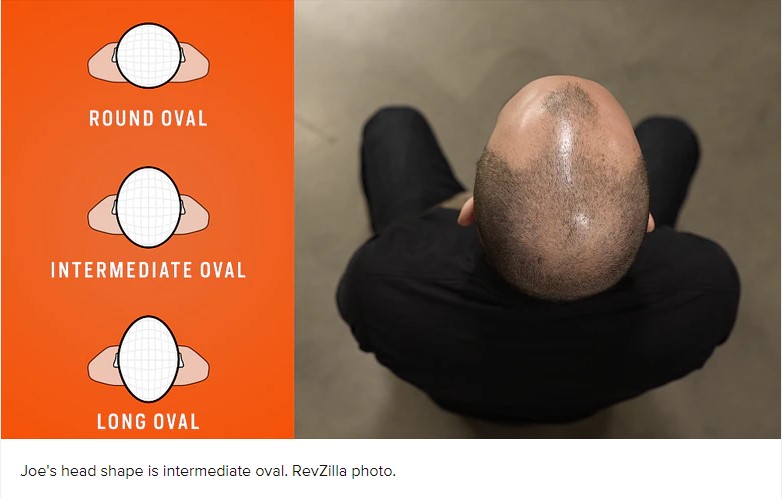
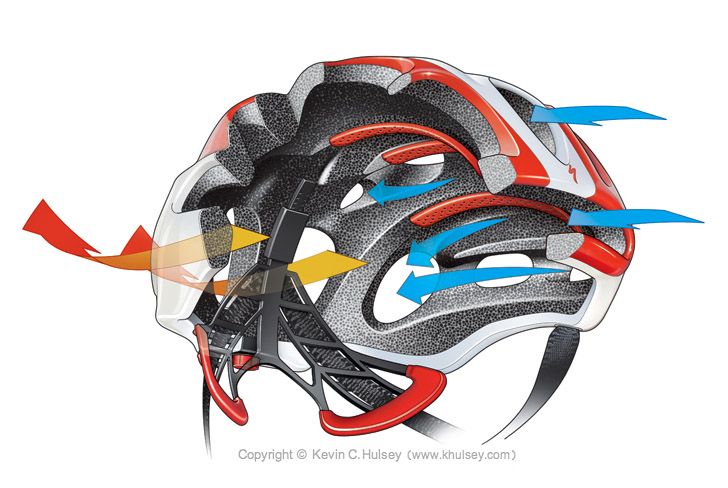
Great review! I opted for the Evade, and found the second I put it on, it fit better than any helmet I’ve ever had. Light, cool, ANGI works good, but like you say, could be improved.
Heard a lot about Hexr – what’s your take on that? I had narrowed it to models like – Hexr or a Abus game changer or Giro Synthe. can you please recommend…
Sulthan, Hexr is a custom made helmet and isn’t approved by US certification body (CPSC) so I couldn’t test it. Looks more like an aero than .ight and cool helmet. Weight unspecified. Also is £299, way over my target. Abus Game Changer is an aero helmet. Synthe isn’t Giro’s coolest/most vented helmet by their own admission. Giro Aether is but it’s way over my price target and isn’t particularly light. Nate also has a Synthe and says it’s not on par with the ones tested here. Steve
As always, thanks for the unbiased perspective you provide, Steve. I especially appreciate you including the insight into what head shape each helmet caters to. How about ease of removing the pads for cleaning? As a follically challenged guy who can work up a good sweat, I value the ease of swapping out/washing pads. Any insight into how those Spesh Prevail pads remove? Based on all those bow-tie connectors, it looks like a long tedious process.
TIA
DMac, Ha, you got me. I guess I can’t ever give my fellow cycling enthusiasts enough details! I need to find a FC (follically challenged) tester for our next review. A couple of the FC guys I know wear caps to keep from getting burned in the summer and cold in the other seasons.
But to your question, yes, the pads are attached with Velcro and remove easily. Steve
https://1drv.ms/u/s!AgB5l6KGfJf4g5crBxV2AQI4_zSdig?e=0uxUtD
I see a lot of POC helmets where I ride in SoCal. Any thoughts on their product line?
Robert, I reviewed and recommended their aero road helmet. You can read that review here. Steve
Great reviews. I own and can attest to the Giro Arie’s comfort for the “follically challenged” rider. It passes the acid test… in that you almost forget you are wearing it. I also own the Giro Aether and Helios. The Aries is tops.
I can also attest to the safety of the ball & socket design of these, after a high speed OTF road crash a few years back, surprisingly with no concussion sustained.
I had to return the Aries because the strap was so short I couldn’t buckle it. I’ve seen others complain about this too. Pretty weird design flaw. I bought the Irek because you said it was too long but it’s not too long for me. Length of the strap doesn’t have lot to do with neck size by the way.